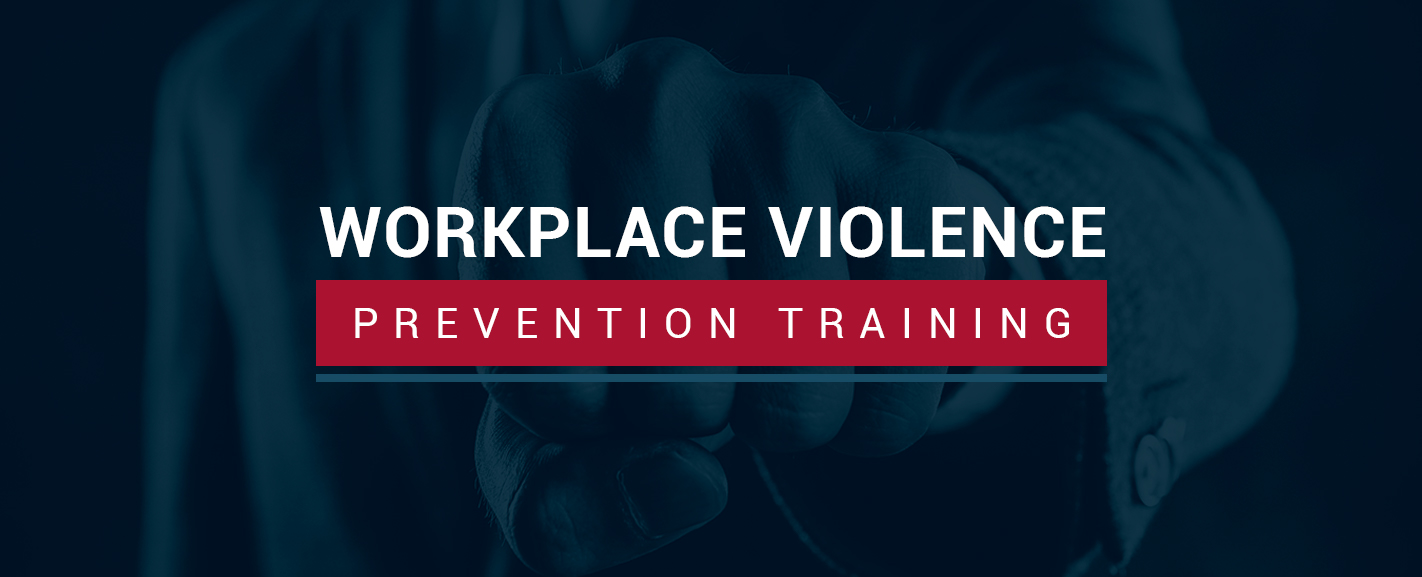Ingenious Devices and Resources for California Workplace Violence Prevention Success
Ingenious Devices and Resources for California Workplace Violence Prevention Success
Blog Article
The Role of Worker Training and Recognition in Enhancing Office Physical Violence Avoidance Initiatives Across Different Industries
The combination of staff member training and awareness right into office physical violence prevention campaigns is increasingly recognized as a basic element of organizational security across diverse sectors. By implementing targeted training programs, services can efficiently empower their workforce to determine and address possible threats before they rise. The efficiency of these efforts usually pivots on several important elements that vary by field, elevating crucial concerns about the versatility of training methods and their real-world influence. Recognizing these subtleties may expose strategies that can considerably improve safety protocols and staff member confidence in high-risk environments.
Significance of Training Programs
In today's dynamic job setting, the relevance of training programs can not be overemphasized, specifically in the context of workplace physical violence avoidance. These programs act as a fundamental element in cultivating a risk-free and safe and secure workplace culture. By gearing up staff members with the knowledge and skills essential to identify, alleviate, and reply to possible dangers, organizations can promote an environment that prioritizes safety and health.
Effective training programs do greater than just instruct; they empower staff members to recognize indication of violence, recognize the procedures for reporting events, and develop techniques to de-escalate prospective conflicts. Furthermore, they instill a sense of cumulative responsibility amongst team, motivating positive participation in keeping a secure work environment.
Financial investment in training not only enhances employee awareness however additionally shows a company's dedication to securing its workforce. This proactive approach can bring about minimized events of office violence, reduced absenteeism, and enhanced staff member spirits. Eventually, comprehensive training programs are essential to establishing a resilient organizational society that values safety and security and promotes a healthy and balanced work setting, consequently minimizing the threat of physical violence and its linked effects.
Secret Parts of Effective Awareness
A comprehensive awareness program encompasses numerous essential parts that are vital for successfully preventing work environment physical violence. First, clear interaction of treatments and policies related to office physical violence is vital. Staff members have to be educated concerning the organization's stance on violence and the details procedures in location for reporting incidents.
Second, training sessions ought to include practical scenarios that workers might encounter. This practical strategy assists workers identify warning indicators of prospective physical violence and equips them with the required skills to de-escalate stressful scenarios. Third, cultivating a helpful office culture is important; workers must feel encouraged to talk up without anxiety of retaliation.
In addition, continuous education is very important to keep recognition fresh and pertinent. Normal correspondence course and updates on arising threats can enhance workers' vigilance and readiness. Integrating comments mechanisms allows employees to share their insights and experiences, which can lead to constant enhancement of recognition initiatives. By incorporating these elements, companies can create a durable framework for protecting against work environment physical violence, inevitably adding to a safer and extra efficient environment for all workers.
Industry-Specific Training Approaches
Efficient work environment violence avoidance training should be customized to the unique challenges and dangers faced by certain markets. Health care atmospheres call for training that addresses the high possibility of encounters with aggressive patients or site visitors. Programs must concentrate on de-escalation methods, identifying warning indications of prospective violence, and making certain staff understand the significance of reporting occurrences.
On the other hand, retail setups might face various hazards, such as robbery or client conflicts. Training in these settings need to highlight situational awareness, action methods throughout emergencies, and the relevance of securing money and valuables.
Manufacturing and building and construction industries present their own threats, typically connected with social disputes or dangerous working conditions. Training in these industries should include strategies for problem resolution, informative post promoting a society of safety and security, and urging open communication among employees.
In addition, company offices may require training fixated avoiding harassment and intimidation, cultivating a considerate work environment society, and applying clear reporting devices. Each sector should not only recognize its specific susceptabilities yet additionally adapt training materials to resonate with the labor force efficiently, guaranteeing that workers feel complete and equipped to manage potential fierce situations.
Gauging Educating Efficiency
Assessing the influence of work environment physical violence avoidance training is critical for making sure that staff members are appropriately prepared to take care of possible dangers. To properly determine training performance, companies should execute both qualitative and quantitative assessment methods. Pre- and post-training surveys can gauge modifications in staff member knowledge, attitudes, and behaviors concerning office violence. These studies need to concentrate on specific training objectives to ensure positioning with the organization's objectives.
Additionally, practical evaluations, such as role-playing circumstances or simulations, can offer understandings right into how well employees use discovered skills in real-life circumstances. Checking event records prior to and after training can additionally offer as an indication of effectiveness, as a reduction in occurrences might reflect improved worker readiness.
Furthermore, comments from participants must be methodically accumulated to recognize locations for improvement in training web content and shipment. Performing follow-up analyses at regular intervals helps suffer awareness and enhances training principles with time - california workplace violence prevention. By employing a thorough technique to determining training performance, companies can make certain that their work environment violence prevention efforts cultivate a more secure atmosphere and boost total employee wellness
Structure a Culture of Safety And Security

Training plays a pivotal function in this cultural shift. Normal, thorough training sessions inform workers regarding identifying warning signs of office violence and the proper reactions. Motivating open interaction allows workers to voice concerns without fear of revenge, promoting cumulative obligation for safety.
In addition, incorporating safety into everyday procedures makes sure that it becomes a common value instead of a mere conformity issue. This consists of regular safety and security drills, updates on policies, and comments devices that involve workers in security discussions and improvements.
Inevitably, a durable society of safety and security not only reduces the risks of workplace physical violence however likewise enhances staff member morale and performance. By fostering a setting where safety is a basic concern, organizations weblink can create resistant work environments that more support both specific wellness and cumulative success.
Final Thought
To conclude, worker training and understanding are essential parts in the prevention of office physical violence across numerous sectors. Reliable training programs, customized to details industry demands, enhance workers' ability to acknowledge and respond to potential risks. By implementing thorough awareness approaches and fostering a society of security, organizations can substantially decrease incidents of workplace violence and enhance overall worker morale. Dedication to recurring training and analysis guarantees sustained performance and adaptability in resolving emerging difficulties within the office atmosphere.

Routine, comprehensive training sessions enlighten workers concerning recognizing warning indicators of workplace physical violence and the proper reactions.In verdict, employee training and recognition are crucial elements in the avoidance of work environment violence across numerous industries.
Report this page